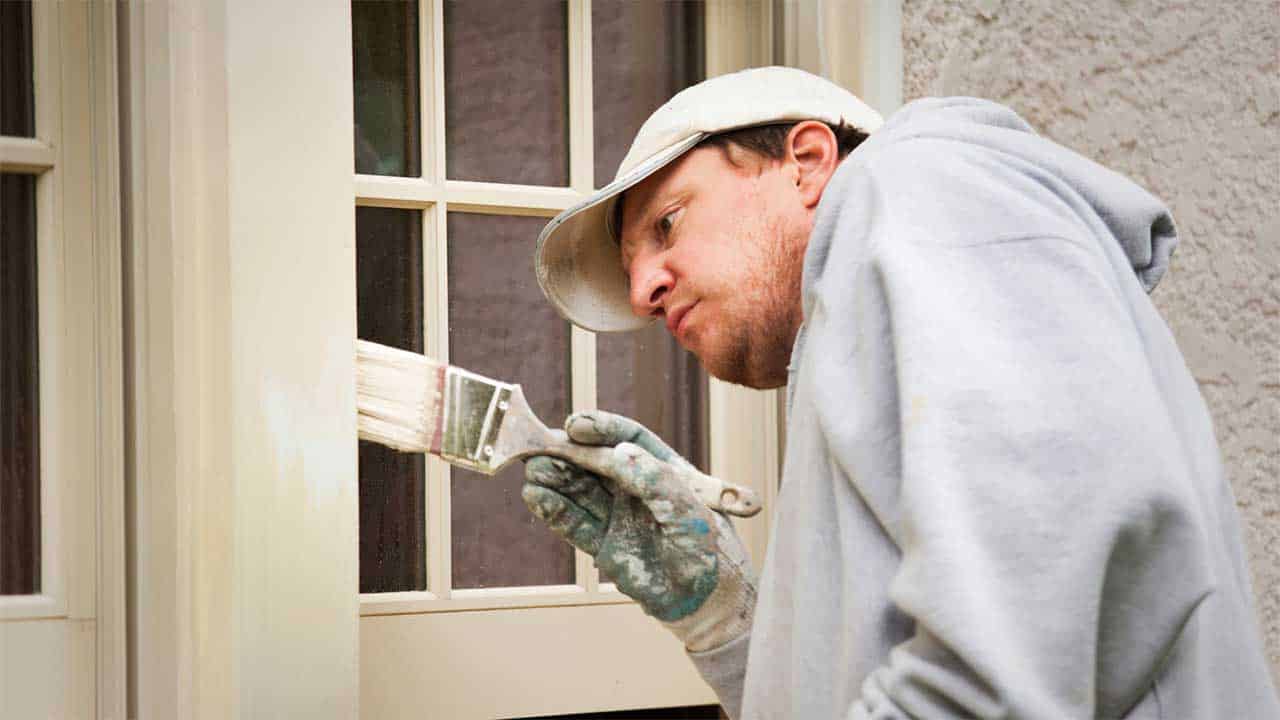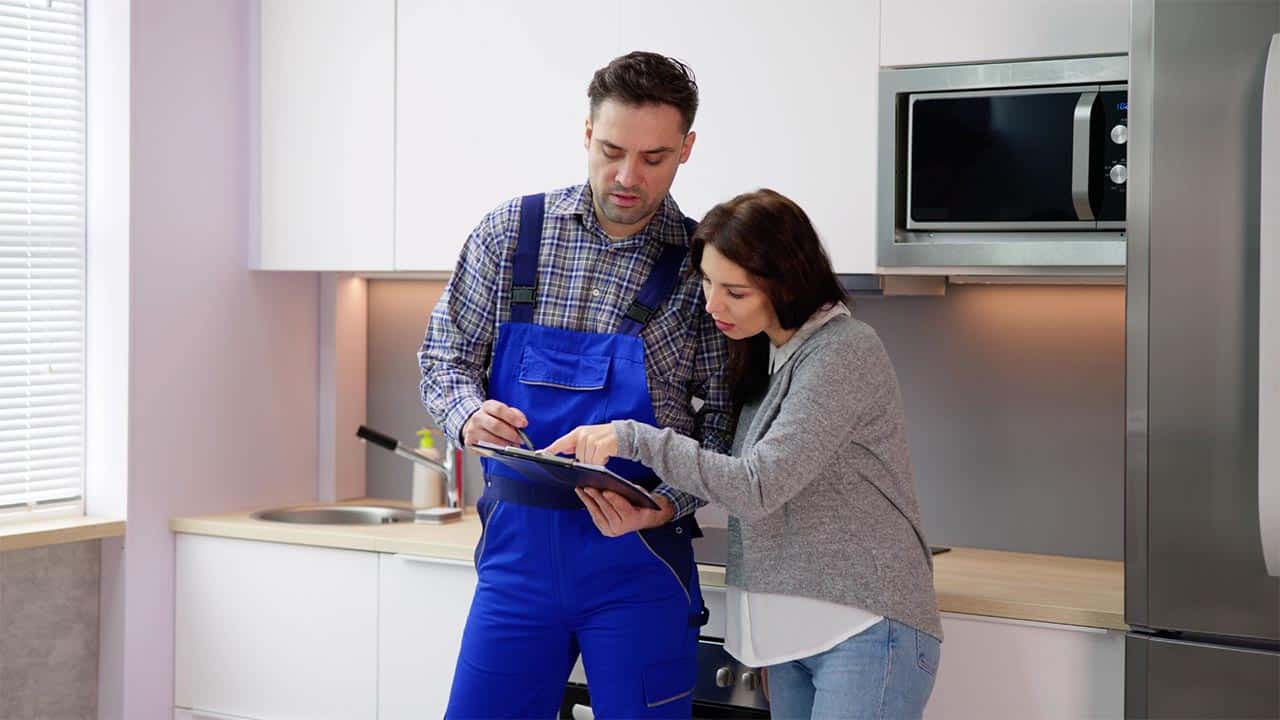Maintaining a home can be a daunting task, but regular upkeep is essential to avoid costly repairs and ensure the longevity of your property.
By carrying out these essential home maintenance tasks on an annual basis, you’ll not only improve the efficiency and safety of your home but also boost its curb appeal and overall value.
From the roof to the foundation, each aspect of your home requires care and attention.
Here’s a detailed guide to the 20 essential home maintenance tasks that every homeowner should complete each year to keep their home in top condition.
1. Inspect and Clean Gutters and Downspouts
Why It’s Important:
Gutters play a critical role in channeling rainwater away from your roof, walls, and foundation.
If they become clogged with leaves, twigs, and debris, water can overflow and lead to costly damage, such as foundation cracks, basement leaks, or roof rot.
How to Do It:
- Remove debris:
Use a ladder to access the gutters and manually remove leaves, twigs, and other debris.
Use a trowel or small shovel to scoop out harder-to-reach buildup.
- Flush the system:
After clearing out debris, use a garden hose to flush the gutters and downspouts, ensuring proper water flow.
- Check for damage:
While cleaning, inspect the gutters for cracks, rust, and sagging. Secure any loose brackets and repair any damage to avoid leaks.
Benefits:
Regular gutter maintenance prevents water damage to your home’s roof, foundation, and siding, saving you thousands in potential repairs.
2. Inspect the Roof for Damage
Why It’s Important:
The roof is your home’s first line of defense against the elements.
Regular inspection helps you catch minor issues like missing or cracked shingles before they escalate into more serious problems such as leaks or water damage.
How to Do It:
- Examine shingles:
Check for signs of wear and tear, such as curling, cracking, or missing shingles.
Replace any damaged shingles promptly.
- Inspect the flashing:
Flashing is the metal material that seals areas where the roof meets structures like chimneys or vents.
Make sure the flashing is secure and free of rust or cracks.
- Look for leaks:
From the attic, inspect the roof for any signs of water intrusion, such as stains, dampness, or visible leaks.
Benefits:
Regular roof inspections extend the life of your roof, prevent costly water damage, and help maintain the overall integrity of your home.
3. Service the HVAC System
Why It’s Important:
Your HVAC system regulates the temperature in your home, ensuring comfort year-round.
Without regular maintenance, the system can become inefficient, leading to higher energy bills or unexpected breakdowns.
How to Do It:
- Change air filters:
Replace air filters every 3-6 months, depending on the type of filter and usage.
This improves airflow and indoor air quality.
- Schedule a professional tune-up:
Hire a licensed HVAC technician annually to inspect and clean the system.
This includes checking refrigerant levels, cleaning coils, and testing thermostat accuracy.
- Check the thermostat:
Ensure your thermostat is working correctly.
Consider upgrading to a programmable or smart thermostat for better energy efficiency.
Benefits:
Maintaining your HVAC system improves energy efficiency, lowers utility bills, extends the system’s lifespan, and reduces the likelihood of expensive repairs.
4. Test Smoke and Carbon Monoxide Detectors
Why It’s Important:
Smoke and carbon monoxide detectors are crucial for the safety of your home and family.
A malfunctioning detector may not alert you in the event of a fire or carbon monoxide leak, which can be life-threatening.
How to Do It:
- Test alarms:
Press the test button on each smoke and carbon monoxide detector to ensure it’s functioning. Replace any units that fail the test.
- Replace batteries:
Even if the alarms are working, replace the batteries at least once a year to ensure they’re always operational.
Many people choose to do this during Daylight Saving Time changes as a reminder.
- Inspect the units:
Check the expiration date on the detectors.
Smoke detectors should be replaced every 10 years, and carbon monoxide detectors every 5-7 years.
Benefits:
Properly functioning detectors provide early warnings of fires or carbon monoxide leaks, potentially saving lives and preventing property damage.
5. Flush the Water Heater
Why It’s Important:
Over time, sediment builds up at the bottom of your water heater, reducing its efficiency and shortening its lifespan.
Flushing the tank removes this sediment, allowing the heater to function more effectively.
How to Do It:
- Turn off the heater:
Shut off the electricity or gas supply to the water heater and allow it to cool.
- Drain the tank:
Attach a garden hose to the drain valve at the bottom of the heater and drain the water into a nearby drain.
Be cautious, as the water can be hot.
- Flush the system:
After the tank is empty, turn the water supply back on to flush out any remaining sediment.
Drain the tank again, then refill it and turn the power back on.
Benefits:
Flushing your water heater improves energy efficiency, reduces heating costs, and extends the life of the appliance.
6. Clean the Dryer Vents
Why It’s Important:
A clogged dryer vent is not only inefficient but also a major fire hazard.
Lint buildup in the dryer vent can cause the dryer to overheat, potentially sparking a fire.
How to Do It:
- Clean the lint trap:
After every load of laundry, remove the lint from the dryer’s lint screen.
- Clean the vent hose:
At least once a year, disconnect the dryer from the power supply, remove the vent hose, and use a dryer vent brush or vacuum to clean out the lint.
- Inspect the vent:
Check the exterior vent for lint buildup and ensure the vent flap opens and closes properly.
Benefits:
Cleaning your dryer vent improves drying efficiency, reduces energy costs, and minimizes the risk of fire.
7. Check Windows and Doors for Leaks
Why It’s Important:
Drafts from windows and doors increase energy consumption, making it more expensive to heat or cool your home.
Addressing these leaks improves insulation and reduces energy bills.
How to Do It:
- Inspect for drafts:
On a windy day, check for air leaks by feeling around the edges of windows and doors.
You can also use a candle or incense stick—the smoke will reveal areas where air is escaping.
- Seal gaps:
Apply new caulking around window frames and weatherstripping along door edges to seal any gaps.
- Check window panes:
If you notice condensation between window panes, it may be a sign of a broken seal.
Consider replacing windows with damaged seals to improve efficiency.
Benefits:
Sealing drafts makes your home more energy-efficient, improves comfort, and lowers utility bills.
8. Inspect and Clean the Chimney
Why It’s Important:
A chimney that is not properly maintained can lead to creosote buildup, a highly flammable substance that can cause chimney fires.
Annual cleaning reduces fire risks and ensures safe operation of your fireplace.
How to Do It:
- Hire a professional:
Schedule a certified chimney sweep to inspect and clean your chimney.
They will remove creosote buildup and check for any structural damage.
- Inspect the exterior:
Check for cracks, loose bricks, or crumbling mortar on the outside of the chimney and repair as necessary.
- Test the damper:
Ensure the chimney damper opens and closes properly to allow smoke to exit and prevent cold air from entering when the fireplace is not in use.
Benefits:
Regular chimney maintenance improves safety, prevents chimney fires, and ensures the efficient operation of your fireplace.
9. Check the Foundation for Cracks
Why It’s Important:
Foundation cracks can lead to water infiltration, structural damage, and even pest infestations.
Addressing small cracks early prevents more serious problems from developing.
How to Do It:
- Inspect for cracks:
Walk around the perimeter of your home and inspect the foundation for cracks or signs of movement.
Small, hairline cracks may not be serious, but larger cracks should be addressed promptly.
- Seal minor cracks:
Use a masonry crack filler or sealant to fill small cracks.
If you notice significant damage or widening cracks, consult a foundation repair specialist.
- Check for water damage:
Look for signs of water pooling around the foundation, which can exacerbate cracks.
Ensure the ground slopes away from your home to direct water away from the foundation.
Benefits:
Inspecting and repairing your foundation prevents costly structural damage and keeps your home safe from water infiltration and pests.
10. Power Wash the Exterior
Why It’s Important:
Dirt, grime, mold, and mildew can accumulate on your home’s exterior over time, diminishing its curb appeal and potentially damaging siding or brickwork.
Power washing restores your home’s appearance and protects its structure.
How to Do It:
- Rent or buy a power washer:
Use a power washer with the appropriate pressure settings to clean your siding, deck, patio, and driveway.
Avoid using too much pressure, which can damage surfaces.
- Use cleaning solutions:
For stubborn stains or mildew, use a specialized cleaning solution designed for your home’s exterior materials (wood, brick, or vinyl).
- Rinse thoroughly:
After applying the cleaning solution, rinse the surfaces with water to remove dirt and detergent.
Benefits:
Power washing enhances your home’s appearance, protects exterior materials, and helps prevent long-term damage caused by mold and mildew.
11. Recaulk Bathtubs, Showers, and Sinks
Why It’s Important:
Old or cracked caulk around bathtubs, showers, and sinks can allow water to seep into walls and floors, leading to mold, mildew, and water damage.
How to Do It:
- Remove old caulk:
Use a utility knife or caulk remover tool to scrape away old caulk around bathtubs, showers, and sinks.
- Clean the area:
Thoroughly clean the area and let it dry completely before applying new caulk.
- Apply new caulk:
Use a silicone or latex-based caulk designed for bathrooms.
Apply a smooth, even bead along the edges, then use a wet finger or a caulk smoothing tool to finish.
Benefits:
Recaulking prevents water damage and mold growth, ensuring that your bathroom remains in good condition.
12. Check Your Home’s Insulation
Why It’s Important:
Proper insulation is key to maintaining energy efficiency in your home, keeping it warm in the winter and cool in the summer.
Poor insulation can lead to higher energy bills and uncomfortable living conditions.
How to Do It:
- Inspect the attic:
Check the insulation in your attic to ensure it’s sufficient. Look for gaps, thin areas, or signs of damage from pests or moisture.
- Add insulation if needed:
If your attic insulation is insufficient, consider adding more to improve energy efficiency.
Fiberglass batts, spray foam, or blown-in insulation are common options.
- Check windows and walls:
Use a thermal camera or conduct a manual inspection to check for cold spots around windows, doors, and walls.
These areas may require additional insulation or weatherproofing.
Benefits:
Upgrading insulation reduces energy bills, improves home comfort, and extends the life of your HVAC system by reducing strain.
13. Test and Inspect Garage Doors
Why It’s Important:
A malfunctioning garage door can pose safety and security risks.
Regular inspection ensures it operates smoothly and safely.
How to Do It:
- Test the auto-reverse feature:
Place an object in the garage door’s path and close the door.
The door should automatically reverse when it touches the object.
If it doesn’t, have the mechanism repaired.
- Lubricate moving parts:
Apply lubricant to the garage door’s rollers, hinges, and tracks to keep the door operating smoothly.
- Check the door balance:
Disconnect the door opener and manually lift the door halfway.
If it doesn’t stay in place, the door may need to be balanced by a professional.
Benefits:
Maintaining your garage door ensures safety, security, and smooth operation, preventing future malfunctions.
14. Maintain Landscaping and Trim Trees
Why It’s Important:
Overgrown trees and shrubs can damage your home’s roof, siding, or windows.
Regular landscaping maintenance keeps your property safe and enhances curb appeal.
How to Do It:
- Trim trees:
Prune back any branches that are hanging over your roof or too close to your home.
This prevents damage during storms and reduces the risk of pests entering your home.
- Maintain the lawn:
Mow the lawn regularly, remove weeds, and keep flower beds neat to maintain your property’s appearance.
- Remove dead branches:
Dead or diseased branches should be removed to prevent them from falling and causing damage.
Benefits:
Regular landscaping maintenance prevents property damage, enhances the appearance of your home, and keeps your yard safe for outdoor activities.
15. Inspect Plumbing for Leaks
Why It’s Important:
Leaky pipes can cause water damage, mold growth, and increased water bills.
Early detection and repair of leaks prevent these issues and save you money in the long run.
How to Do It:
- Check faucets and pipes:
Inspect under sinks, around toilets, and behind appliances for signs of leaks, such as water stains, mold, or dampness.
- Fix minor leaks:
Tighten loose connections or replace washers in faucets and showerheads to fix small leaks.
If you find more serious issues, consult a plumber.
- Check the water meter:
Turn off all water fixtures and check the water meter.
If it continues to move, there’s likely a leak somewhere in your plumbing system.
Benefits:
Addressing leaks early prevents water damage, mold growth, and high water bills, saving you money and keeping your home safe.
16. Clean and Seal Decks and Patios
Why It’s Important:
Exposure to the elements can cause wood and other outdoor surfaces to deteriorate.
Regular cleaning and sealing protect decks and patios from moisture, UV rays, and general wear and tear.
How to Do It:
- Clean the surface:
Sweep the deck or patio to remove dirt and debris.
Use a deck cleaner or mild detergent to scrub away stains and mildew.
- Seal the surface:
After cleaning, apply a water-resistant sealant to protect wooden decks from moisture and UV damage.
For stone or concrete patios, consider using a protective sealant to prevent cracking and fading.
Benefits:
Sealing your deck and patio extends their lifespan, enhances appearance, and protects against weather damage.
17. Inspect and Clean the Sump Pump
Why It’s Important:
Your sump pump prevents water from flooding your basement during heavy rains or groundwater intrusion.
Regular maintenance ensures it works when you need it most.
How to Do It:
- Test the pump:
Pour a bucket of water into the sump pit to ensure the pump activates and drains the water properly.
- Clean the pit:
Remove any debris or dirt from the sump pit to prevent clogs.
- Inspect the float switch:
Ensure the float switch moves freely and isn’t obstructed, as this is what triggers the pump to turn on.
Benefits:
Maintaining your sump pump protects your home from water damage, flooding, and mold growth.
18. Clean Refrigerator Coils
Why It’s Important:
Dust and debris can accumulate on the coils at the back or bottom of your refrigerator, making it work harder to maintain a cool temperature.
This increases energy consumption and shortens the lifespan of the appliance.
How to Do It:
- Unplug the refrigerator:
Move the refrigerator away from the wall and unplug it for safety.
- Vacuum the coils:
Use a vacuum or coil cleaning brush to remove dust and debris from the refrigerator’s coils.
- Wipe down the area:
After cleaning the coils, wipe down the surrounding area to remove any additional dust.
Benefits:
Cleaning the refrigerator coils improves energy efficiency, reduces utility bills, and extends the life of the appliance.
19. Seal Driveway Cracks
Why It’s Important:
Cracks in your driveway can lead to larger, more expensive repairs over time if water seeps in and causes further damage.
Sealing these cracks prevents erosion and maintains the appearance of your driveway.
How to Do It:
- Clean the driveway:
Sweep the surface and clear out any debris or vegetation from the cracks.
- Apply crack filler:
Use a driveway crack filler or asphalt patching material to seal small cracks.
- Reseal the driveway:
Every few years, consider resealing the entire driveway to protect against weather damage and keep it looking fresh.
Benefits:
Sealing cracks prevents further damage, extends the life of your driveway, and improves curb appeal.
20. Check the Attic for Pests
Why It’s Important:
Pests like rodents, birds, or insects can cause significant damage to insulation, wiring, and wood framing in your attic.
Annual inspections help catch infestations early before they become severe.
How to Do It:
- Inspect for signs of pests:
Look for droppings, nests, or chewed materials in the attic. If you find signs of pests, take action immediately.
- Seal entry points:
Check for any gaps, holes, or cracks that pests could use to enter your attic and seal them with caulk, mesh, or foam insulation.
- Set traps or call a professional:
If you have a pest problem, set traps or consult a pest control professional to safely remove the animals.
Benefits:
Regular attic inspections prevent pest infestations, protect your home’s structure, and maintain energy efficiency by preventing insulation damage.
Takeaway
By performing these 20 essential home maintenance tasks each year, you’ll help keep your home safe, energy-efficient, and in good condition.
Regular maintenance not only prevents costly repairs but also preserves the value and comfort of your property.
Whether you choose to do these tasks yourself or hire professionals, staying on top of these annual responsibilities ensures that your home remains a well-maintained, functional, and beautiful place to live for years to come.












































